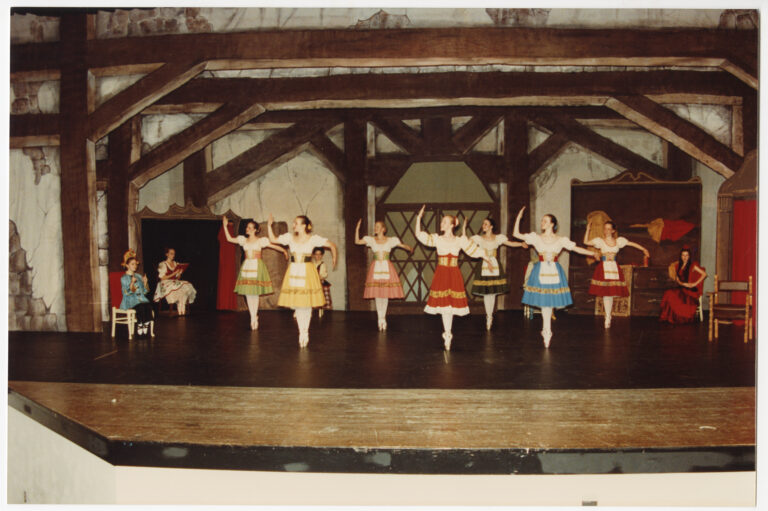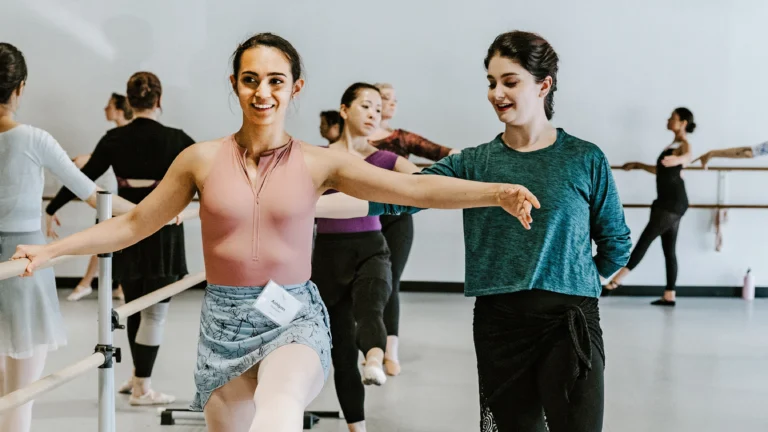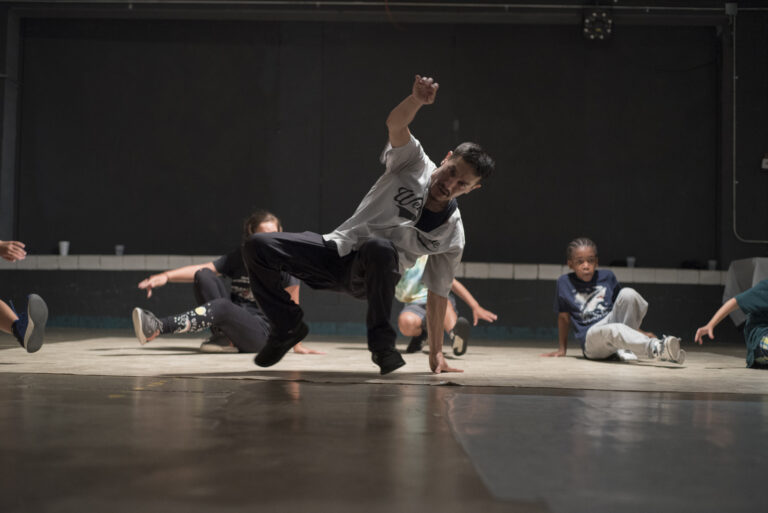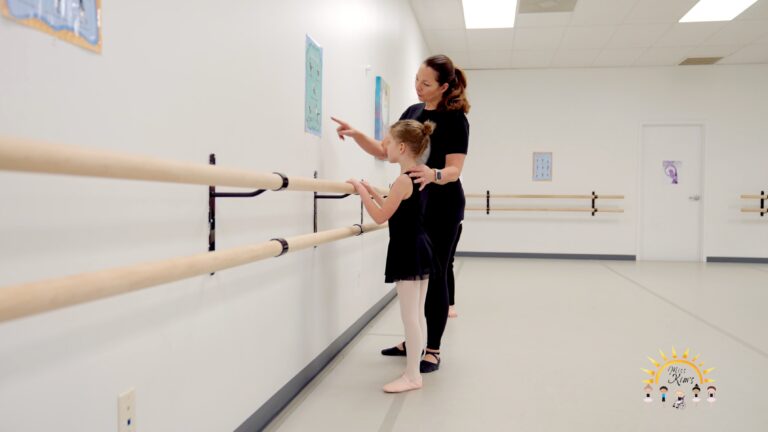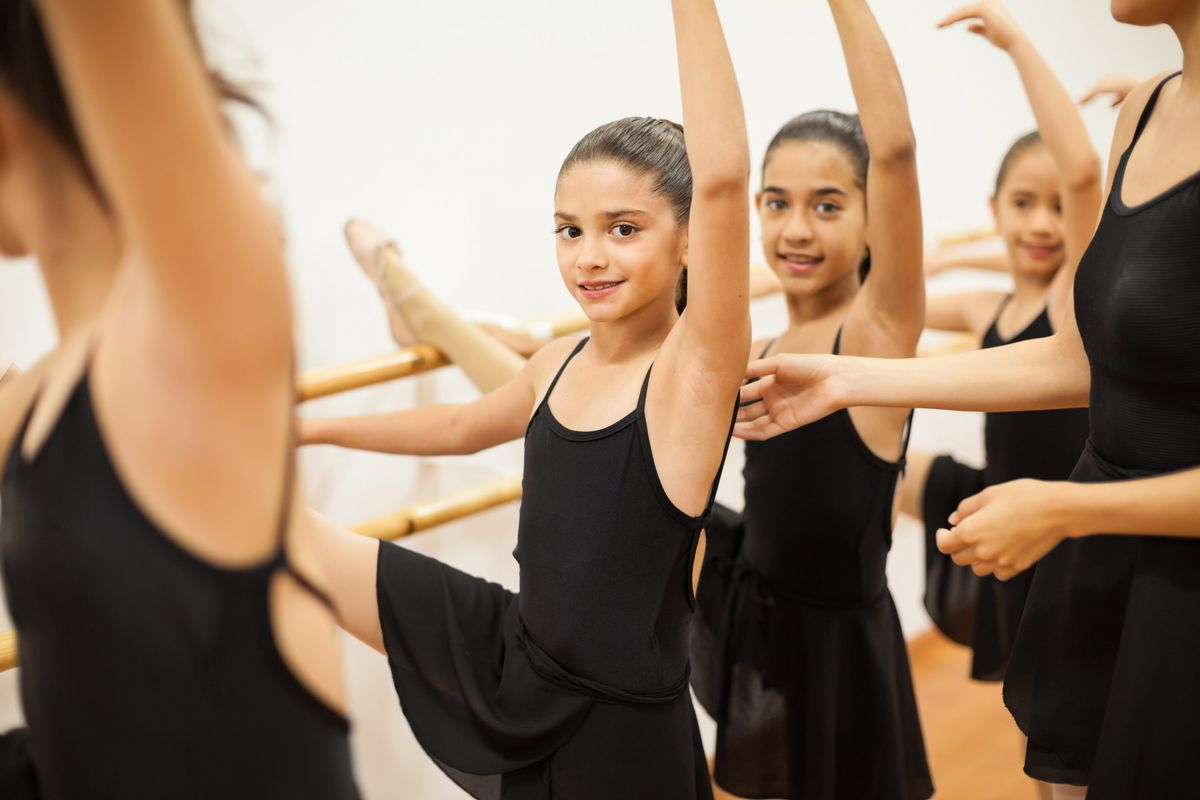
Studio owners agree that it can be tricky to maintain a thriving student base of dancers who take only a class or two a week. Kids are busy trying any number of extracurricular activities—soccer, cheerleading, piano lessons—and parents are anxious to see what sticks. How do you compete? We talked with four savvy owners who’ve built a loyal following of once-a-week dancers with conscious programming and well-tailored scheduling.
Recognize students of the month
Becca Moore and Dani Rosenberg ask each teacher at their Marietta, Georgia–based studio to nominate a dancer of the month. They select one preschool/kinder student, one elementary, one teen and one company dancer. Rhythm Dance Center honors the winners in a big way, via an e-mail blast to the entire studio and the school’s newsletter, with a photo of each student and their teacher. Dancers get a $50 tuition credit and a “Dancer of the Month” T-shirt. “We receive so many nice e-mails from moms after we post the winners each month,” says Rosenberg. “It really is special recognition for the dancers.”
Go the extra mile
Have yard signs made that read “Dancer of the Month” and include your studio logo. Offer students the chance to keep the yard sign all month long.
Reward achievement
Bonnie Schuetz of Boni’s Dance and Performing Arts Studio in The Woodlands, Texas, rewards her kids for their efforts in class. For example, students who get their left, right and center splits become members of the Banana Split Club, which comes with a Dairy Queen gift certificate. She suggests handing out a piece of paper with a word of the week, like “maxi ford” or “port de bras,” with its spelling, pronunciation and meaning included. After six or eight weeks’ worth of words, give your students a vocabulary test—and reward those who score well with fun prizes.
Go the extra mile
Devote each month to a different era—the rock-‘n’-roll ’50s, the groovy ’70s —and make it a studio-wide throwback. Decorate your hallways and lobby around the theme, and incorporate music and dance styles from that decade into your warm-ups or combinations.
Schedule shrewdly
“Keep requirements to a minimum,” says Rosenberg. “Some kids have no desire to take ballet or tap.” If students want only to take a hip-hop or contemporary class, she and Moore encourage it.
Go the extra mile
Schuetz suggests offering a mixed-age basics class each year for students who want to take ballet and tap for the first time. Dancers who first found your studio via a specialty style class will appreciate the opportunity to later dip their toes into foundational dance classes.
Create nonrecital traditions
Southern Strutt Dance Studio owner Nancy Giles hosts Daddy-Daughter Dance-Offs (with prizes for the winners), names certain weeks of the year “theme” weeks and even holds movie nights in her studio parking lot, with a projector and a grill for marshmallows—all for the purpose of creating bonds between students.
Go the extra mile
Start a big sister–little sister program at your studio, assigning older students a younger one to mentor for the year. Pair a shy young student with an outgoing older dancer to maximize their connection.
Employ excited teachers
Schuetz recommends having high-energy, warm-and-fuzzy teachers who know how to engage and inspire students. “Fun and positive energy inside and outside the classroom is important,” says Rosenberg. “You want their entire experience at your studio to be fun and memorable, from the minute they walk in the front door until the time they get onstage at your year-end show.”
Go the extra mile
Moore and Rosenberg make sure their teachers stay current with what kids are interested in: music, television shows, apps. “It helps!” says Rosenberg.
Launch a part-time competition team
Rosenberg and Moore beef up performance opportunities beyond the year-end recital. Spotlight is an invitation-only team for students who aren’t ready to commit to the full-time competition experience. “Toward the end of each season,” says Rosenberg, “we ask our teachers to recommend dancers for the program who show potential or have a bit more focus.” The selected dancers are required to take two classes a week (jazz and ballet)—”and we schedule those back-to-back to make it convenient,” says Rosenberg. They attend one local competition toward the end of the season (usually in April) and compete with their recital jazz dance. The only additional cost, aside from tuition, is a $45 entry fee for that competition (compared to at least $700 for participation in one of their other comp teams).
“The competition experience really gives them a boost of confidence and a small taste of what the company dancers do, should they choose to audition for the company in the future,” says Rosenberg. “This program has been incredibly successful for us—we started with just one Spotlight class, and now we have five full ones.”
Go the extra mile
Keep your summer active by requiring your part-time competition dancers to attend a summer camp at your studio. “We offer several date options throughout the summer, so there are no excuses as to why they can’t make it to a camp,” says Rosenberg. Each weeklong camp costs approximately $250, and they’re only required to attend one.

